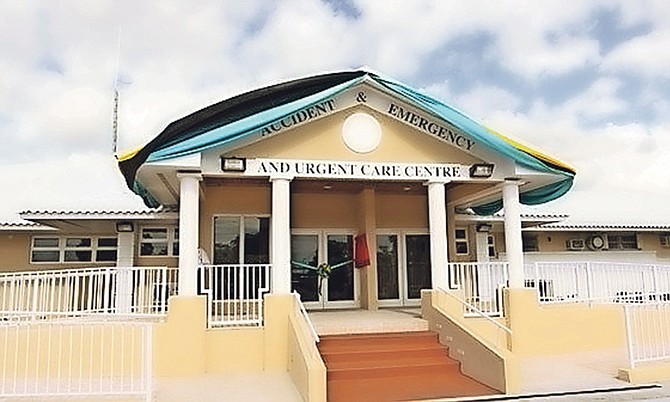By DENISE MAYCOCK
Tribune Freeport Reporter
dmaycock@ tribunemedia.net
THE single patient hospitalised with scarlet fever on Grand Bahama has been treated and discharged from the Rand Memorial Hospital, according to medical officials here at the public health institution.
Dr Shailesh Hegde, the registrar of Disease Surveillance Unit of GBHS, said there was no outbreak and confirmed that there was only one case of scarlet fever at the Rand.
He said that the person was admitted to the hospital on January 18. “He has improved and is discharged already,” Dr Hegde said Friday at a press conference in the hospital’s conference room.
“I also would like to inform the public that scarlet fever is not a deadly disease as it used to be because we have antibodies and it can easily cure the person of scarlet fever – it is not something new.
“We had only one case, so we cannot call it an outbreak. It is just a single isolated case of scarlet fever,” he said.
News of the scarlet fever case went viral on social media last weekend reporting that a male worker at a local company in the industrial area had contracted the disease.
Dr Hegde said that the symptoms usually start with fever, followed by a rash within 48 to 72 hours. The rash, which is bright red with sandpaper texture, usually begins from the groin area and spreads to the upper body, to the arms and limbs until the whole body is covered.
He noted that persons with scarlet fever could also appear with a bright red tongue that gives the appearance of a strawberry tongue, which is sometimes referred to as“raspberry tongue”.
Dr Hegde said the bacteria – Group A Streptococcus - that causes scarlet fever is common and also causes strep throat.
He said that Group A streptococcus, commonly known as GAS, is easily treatable with penicillin and metronidazole.
“It is spread usually by inhaling the bacteria, and it is there in the community; it is like strep throat – the same bacteria that causes a sore throat, pneumonia, and the same bacteria which in some persons might cause scarlet fever even though it is not very common,” Dr Hegde explained.
Dr Nicole Clarke, a senior registrar in the Department of Internal Medicine at RMH, said she and her team treated the patient with antibiotics.
“We were able to culture the organism, so we were assured of what had occurred, she said. It is quite present in the population, and there are what we call chronic carriers of the bacteria where persons with it who have no symptoms and have gone on their everyday life not knowing about it. However, these persons come in contact with somebody who is usually what we called immune compromised where their immune system is weak, and those persons could present with symptoms and end up presenting to the hospital. The vast majority of those infected with the organism generally clear without antibiotics,” she said.
Dr Clarke said if you do not have symptoms, and decide not to go to the hospital, a vast majority of persons, about 65 percent, will actually clear the bacteria; however, there are another 35 percent who may have it and not clear and go to hospital.
She said Scarlet Fever had not been reported for a while. “That does not mean that it is something that will lead into an epidemic,” she said, adding that usually around this time of year – November to February – when it is cold, and persons are more likely to be in close quarters. It is like the common cold and flu, and this is one of those conditions that can occur around this time. It is not something to be alarmed about because these things happen every year and in a lot of places we do get one or two cases of these occurrences without any great alarm to the population until we can get an actual cure aka to eradicate an organism they are always going to present and there is always risk of getting it,” stated Dr Clarke.
Dr Stacey Bevans-Laing, acting clinical director for Community Health Services, urged persons to practice good hygiene by washing hands after coughing and sneezing in them. She also said that it is best to cough or sneeze in your elbow and/or use disposal tissue, not a towel.
She said that persons with the symptoms of Scarlet Fever might go to the Community clinics for treatment, not the emergency room.





Comments
BMW 5 years, 2 months ago
He is a lucky one, some dont leave that place.
Sign in to comment
Or login with:
OpenID